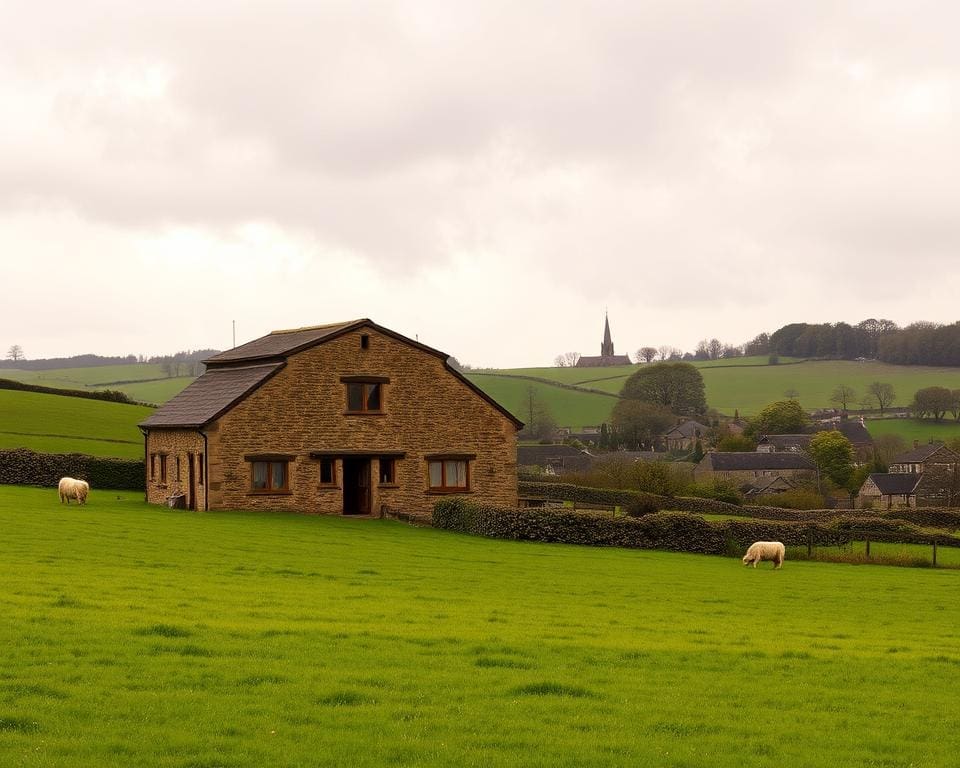Converting a barn into a home is an inspiring venture that has captured the hearts of many aspiring homeowners in Yorkshire. However, navigating the complex landscape of regulations can be daunting. Understanding what permits are needed for barn homes in Yorkshire is essential for a successful transformation. Yorkshire barn homes are not only unique but also represent a sustainable living choice that celebrates heritage and modernity.
In this section, we will unveil the critical barn conversion permits that you need to consider before embarking on your journey. With the right knowledge, you’ll be well-equipped to tackle the necessary planning requirements, ensuring your dream home is both compliant and compliant with local laws.
Understanding Barn Homes in Yorkshire
Barn conversions bring a distinctive charm to the landscape of Yorkshire. These traditional agricultural structures can be transformed into modern homes while respecting their historical character. Many are drawn to the unique architecture, commonly featuring open spaces and natural materials that create a warm and inviting atmosphere.

Overview of Barn Conversions
In recent years, barn conversions have gained popularity as an alternative housing option. The process involves adapting an existing structure to meet contemporary living requirements. Individuals interested in barn conversion permits must navigate various barn homes regulations Yorkshire. This ensures that projects not only meet modern standards but also preserve the barn’s authenticity.
Benefits of Converting a Barn into a Home
The sustainability aspect of barn conversions is noteworthy, as repurposing existing buildings significantly lowers environmental impact. By transforming old barns, homeowners contribute to reducing carbon footprints while enjoying potential financial advantages. Properties that have undergone successful conversions often experience increased market value, making them an alluring investment. Additionally, various financial incentives may be accessible for those embarking on this journey, reinforcing the appeal of barn homes permits.
What permits are needed for barn homes in Yorkshire?
Embarking on the journey of transforming a barn into a stunning home requires a deep understanding of the necessary legalities involved. Knowing the key permits and permissions is crucial in ensuring the process runs smoothly. In Yorkshire, planning permission for barn homes is often the first hurdle to overcome. Prospective homeowners must navigate through essential permits for barn conversions to achieve their dream living space.
Essential Permits for Barn Conversions
Converting a barn involves several essential permits. These may include:
- Full planning application: This is typically required for extensive modifications that change the building’s appearance or layout.
- Change of use application: If the barn’s original purpose differs from residential use, this application is essential to change its classification.
- Supplementary permissions: If the barn is listed, additional permissions may be necessary to ensure compliance with heritage regulations.
How to Apply for Planning Permission
Applying for planning permission for barn homes can initially seem daunting. Start with preliminary research on your local council’s requirements and guidelines. Gather the necessary documentation, including:
- Site plans and location maps.
- Design and access statements.
- Supporting photographs of the barn’s current condition.
Once the documents are ready, submit your application along with the relevant fees. It is wise to anticipate a waiting period, which can vary significantly depending on your council’s workload. By being prepared and informed, applicants can better navigate the process of acquiring barn homes permits.
Planning Permission for Barn Homes
Transforming a barn into a home requires careful attention to planning permission for barn homes. Understanding the different types of permissions available can streamline the conversion process significantly. With the right information, prospective homeowners can navigate through the legalities more easily, ensuring that their project aligns with both personal aspirations and regulatory requirements.
Types of Planning Permissions
There are primarily two types of planning permissions applicable to barn conversions:
- Permitted Development Rights: This allows certain types of barn conversions without full planning permission, provided the project meets specific criteria. It is vital to confirm eligibility as these rights can vary based on location.
- Full Planning Permission: For more extensive alterations that do not fall under the permitted development banner, full planning permission is necessary. Applicants must submit detailed plans and sometimes face more extended processing times.
Application Process Explained
The process of applying for barn conversion permits can be intricate, but breaking it down can aid in managing the task effectively. Here are the key steps involved:
- Pre-application Advice: Consult with your local council to clarify requirements and receive guidance on your proposal.
- Prepare Plans: Create comprehensive plans reflecting the intended design and how it complies with building regulations barn homes.
- Submit Application: Provide your plans and relevant documents to your local authority, ensuring that all forms are correctly filled.
- Respond to Feedback: Be prepared to address any objections or requests for clarification from the council, adapting your plans accordingly.
Building Regulations for Barn Homes
Understanding the building regulations barn homes must comply with is crucial for anyone considering a barn conversion in Yorkshire. These regulations ensure that any renovation fosters a safe, sustainable, and functional living environment. Adhering to these standards not only enhances the quality of the finished home but also safeguards its integrity over time.
Overview of Building Regulations
Building regulations encompass a set of legally binding guidelines that dictate how structures must be built, maintained, and altered. For barn conversions, these regulations cover various essential aspects, including:
- Structural stability to ensure the building can withstand natural forces.
- Fire safety measures to protect occupants in the event of a fire.
- Energy efficiency to reduce environmental impact and living costs.
- Accessibility standards to accommodate all individuals, regardless of mobility.
In Yorkshire, clasping these barn homes regulations provides a framework for effective planning and execution, forming the foundation for any successful conversion project.
Compliance Checklist for Barn Conversions
A compliance checklist for barn conversions is an invaluable tool for prospective homeowners aiming to navigate the complex landscape of building regulations. Key elements of this checklist include:
- Verification of structural integrity through appropriate assessments.
- Implementation of fire safety systems, including alarms and escape routes.
- Installation of adequate insulation to meet energy efficiency standards.
- Evaluation of drainage systems to prevent water accumulation and potential damage.
By scrutinising each item in this checklist, individuals can ensure their barn home meets all necessary criteria, enhancing the likelihood of passing inspections and securing a safe, compliant living space.
Listed Building Consent in Yorkshire
Understanding listed building consent is vital for anyone looking to convert a barn into a home in Yorkshire. This consent is a legal requirement aimed at protecting buildings of historical significance. Properties classified as listed buildings require specific permissions to ensure their heritage value is preserved. Potential homeowners must grasp the nuances of this important aspect, as navigating the process can be complex.
What is Listed Building Consent?
Listed building consent refers to the necessary approval required before any alterations can be made to a building recognised for its historical or architectural merit. In Yorkshire, this concept is particularly relevant for barn homes, as many in the region are often former agricultural buildings that have been repurposed. Understanding this consent is essential for securing barn homes permits, which may be contingent on the successful acquisition of listed building consent.
How it Affects Barn Conversions in Yorkshire
Failing to obtain the necessary listed building consent can lead to serious repercussions, including hefty fines or an order to reverse modifications. Such outcomes can significantly derail the barn conversion process, making it imperative for prospective homeowners to adhere to the guidelines set forth for barn conversion permits. Always seek professional advice when engaging in barn conversion projects to ensure compliance with regulations surrounding listed buildings.
Common Challenges and Considerations
Navigating the landscape of barn conversion permits and the associated barn homes regulations in Yorkshire can often be a daunting task. Prospective homeowners might encounter challenges such as dealing with local authorities that require comprehensive plans and justifications for their projects. Understanding the local planning environment is crucial, as each council may have specific stipulations regarding the design, structure, and intended use of barn conversions.
Financial constraints also play a significant role in the conversion process. The costs associated with securing planning permission for barn homes, along with compliance with building regulations, can quickly accumulate. Homeowners should be prepared for the possibility of unexpected expenses and budget accordingly to address any concerns raised during the planning phase.
Moreover, potential opposition from conservation groups can arise, especially in areas of historical significance or environmental sensitivity. These considerations often necessitate thorough environmental assessments and consultations with local stakeholders. Recognising these challenges early in the project enables potential barn homeowners to devise a robust strategy, ensuring they approach their vision with confidence and awareness of the path ahead.









